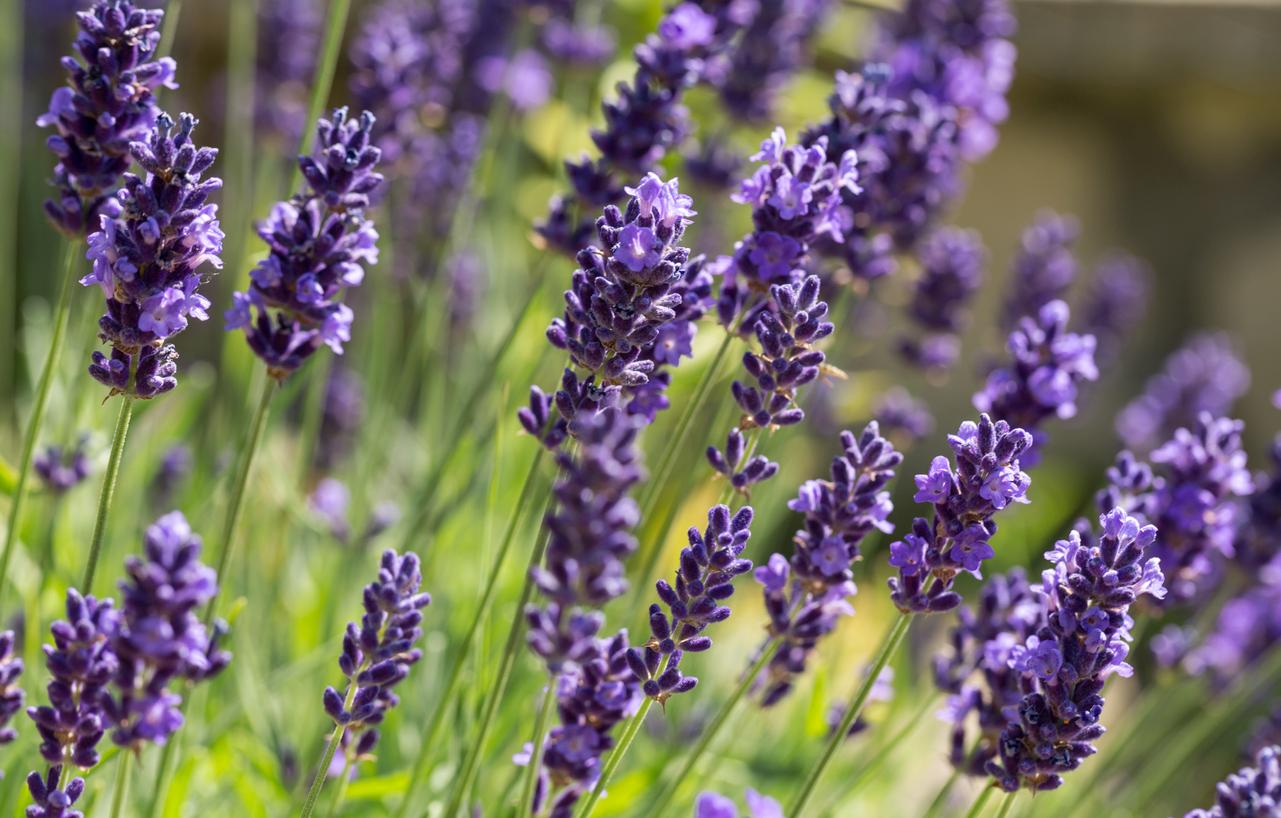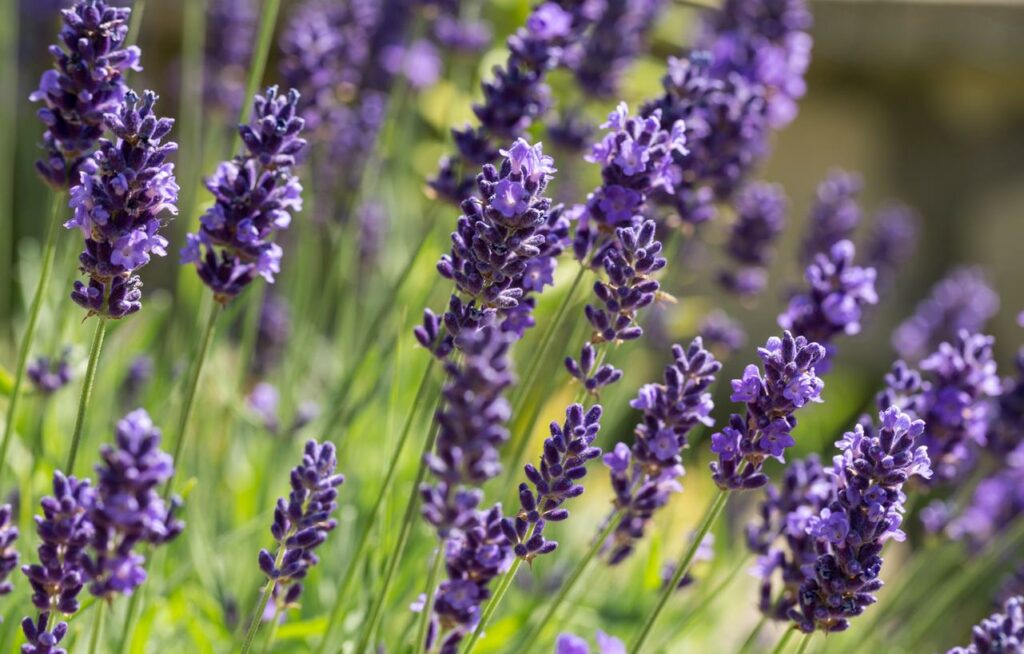Lavender Plant Care: How To Grow Lavender Plants
The Romans were the first to use the lavender plant back in 77 AD. Ironically they didn’t use it for ornamental purposes but to repel insects. The flowers also had a soothing effect on the skin, especially with insect bites. To this day people rely on the calming effects of lavender to get a good night’s sleep. Either you can keep a sachet of the plant under your pillow or you can use lavender oil in the bedroom. It also has its uses in the kitchen.
With so many practical uses and benefits, it’s no wonder the lavender plant has been a favorite in many gardens throughout the ages. So the question is, how do you grow it in your garden, and which lavender variety suits you best.
Lavender Plant at a Glance
Lavender (Lavandula) hails from the warm regions in Eastern Africa, Southeast Asia, the Mediterranean, and Southern Europe. For a herbaceous perennial its blooms don’t last long and have a short life mainly. It doesn’t take up much space whether you grow it indoors or out in the garden. The fully grown plant reaches about 24 inches high the same in width.
With silver-green leaves that take your breath away, it’s actually the flowers that are highly prized. Lavender blooms usually from late spring to early summer. Even if the flowers don’t last long, you can still harvest and store them for later use. The blooms come in various colors depending on the species you grow. You can have white flowers, or blue, rose, yellow or pink.
You can grow lavender as a companion plant to a whole litany of other plants. It grows well with cabbage and roses among others. The plant has a distinct aroma that has made it a household herb not just for its fragrance but for its practical benefits as an insect repellent as well.
Lavender Plant Varieties
In general, there are 4 varieties of lavender that you can grow in your garden. They vary in their need for temperature and light. But since lavender grows successfully indoors, you can practically grow any species as a houseplant without issues. Here are the common varieties.
- English Lavender (Lavandula angustifolia): Averages between 2 to 3 feet when fully grown, it blooms between June and August every year. The flowers range from white to light pink and purple-blue. It can handle cool climates and has hardiness zones between 5 and 8. The leaves are usually silver-gray and the flowers tiny but grow in clusters along the slim stalks.
- French Lavender (Lavandula dentata): This variety favors warmer weather than the English variety. It has hardiness zones between 8 and 11. Bloom time is much longer though and lasts from early summer all the way to the fall. It reaches about 36 inches high when fully mature so it needs more space. The leaves are usually narrow with jagged edges and are more aromatic than the actual flowers. The blooms are usually light purple.
- Spanish Lavender (Lavandula stoechas): Similar in hardiness and weather requirements to the French lavender. Its bloom time is much shorter though and lasts from mid to late summer every year. It grows to 18 inches high and sometimes can reach 24 inches depending on the weather and soil. The flowers have a deep purple color and look a lot like pineapples. They grow on a spike and come out of colorful bracts. The leaves are light green and quite aromatic as well.
- Lavandin (Lavandula ×intermedia): One of the most tolerant lavender species with hardiness zones between 5 and 11. It handles warm as well as cool climates very well. It’s a small and compact variety reaching about two and a half feet when fully mature. The flowers are either white or dark violet and bloom from mid to late summer. They emerge from long spikes and have a stronger fragrance than the other varieties. Even when dried out and stored, the flowers maintain a lot of their aroma due to high concentrations of camphor.
How to Grow Lavender Plant
The good news is, no matter how harsh the weather conditions in your area, you can still grow lavender. It grows well in containers indoors as well as in the garden. If you’re worried about temperature drops even inf the middle of summer, you can grow Lavendin which has the highest temperature tolerance of all lavender varieties. The process is almost identical whether you grow it as a houseplant or outdoors. Here’s how to grow lavender in simple steps.
- Prepare your soil well in advance even before you bring the lavender plant from the nursery.
- The best time to plant is in the early spring after the last frost and when the soil is warm.
- The plant prefers well-drained and loose soil. If the soil in your garden is packed or clay, you can grow it on a raised bed that’s about one foot above the ground.
- Pick a spot that gets plenty of full sun every day. Between 4 to 6 hours of sunlight daily are recommended.
- Dig a hole in the soil that is deep enough to take the plant’s root ball and plant it as soon as you get it.
- Place the plant in the hole and fill it with soil. Make sure the plant can stand on its own.
- Space the plants about 3 feet from each other to allow air ventilation.
- Water the plants immediately after planting to help the soil settle.
- When the soil dries out, water the plant regularly during the summer months.
If you’re growing lavender in a container, just make sure the container has drainage holes and that the soil is well-drained. Add one portion of perlite to the soil to improve drainage.
Lavender Plants Care
While it’s easy to get your lavender plant started, you’ll need to invest some time and effort to see it flower successfully. If you grow it in the garden and winters tend to be really cold where you live, you’ll have to overwinter the plant to ensure it survives and grows back in the spring.
Water
The water requirements of lavender vary based on the weather and its growing stage. Early on in the first year of its life, it will need regular watering. But once the first summer has passed, you should hold off irrigation. The roots of the plant penetrate the soil deep enough to make it drought tolerant. If it’s growing in a container, then make sure to water it once or twice a week during the summer months. The soil in the container gets dry much faster than in the garden. But in the winter, you don’t have to water it so often. You can even let the soil dry out without impacting the health of the plant.
Deadheading
Since the lavender blooms so abundantly, you will need to deadhead it to encourage more blooms to grow. This also prevents the plant from wasting its resources and energy on growing seeds. At the end of the season, when you’ve had enough flowers, you can let some fade and grow seeds. Many birds feed on lavender seed especially goldfinches that stock up on the nutritious seeds in preparation for the winter.
Pruning
That’s another pressing need that you have to take care of as far as lavender care is concerned. If you neglect it or let the plant grow as it pleases, it becomes woody and unmanageable. For an ornamental perennial, pruning is crucial for the success of lavender. The best time to take your pruning shears to the plant is in the late summer after the last flowers have faded. Start with the dead flowers and make sure you remove the whole spike to preserve the plant’s energy. You then turn to the leaves and remove about one inch of new growth. This will keep the plant looking tidy until the spring growth.
Overwintering
When the winter nights become chilly, it’s the lavender roots that bear the brunt of it. This is especially true for plants growing in containers. So take these pots inside and keep them in a warm place until the weather improves. If the winters are mild, then you can grow lavender outdoors and cover the soil with a thick layer of gravel. Don’t use mulch. Gravel keeps the temperature of the soil and insulates the roots from the drop in temperature.
Pests and Diseases
If you grow your lavender in a well-drained spot that gets plenty of sunlight and keep the soil relatively dry, then you can avoid many of the common pests and diseases that infect flowering plants and perennials. While it repels insects, some bugs are immune to its fragrance and feed on its leaves. These include leafhoppers, rosemary beetles, and cuckoo spits. Use neem oil to get rid of these pests.
Avoid overwatering the soil since that leads to root rot. In this respect, lavender is no different from any other plant that thrives in well-drained soil.
Tips for Growing Lavander Plant
As you can see it’s easy to grow and take care of lavender plants. Even if the plant doesn’t suffer from serious diseases, a lot can go wrong. So here are a few tips to point you in the right direction.
- Full sun is crucial for the success of the plant. So make sure it gets at least 6 hours of sunlight every day during the summer.
- Water as economically as possible. Only water enough to get the soil moist, not wet.
- If you don’t have well-drained or loamy soil in your garden, you can grow it on raised beds or mounds to improve drainage.
- Space the plants well when you plant them to ensure they get plenty of ventilation and allow the air to flow freely between them.
- High humidity in the air is bad for lavender. Consider growing it indoors where the air is less humid.
- Don’t mulch since it increases the moisture in the soil.
- You don’t need to fertilize lavender. The plants do well with just the nutrition available in the soil.

